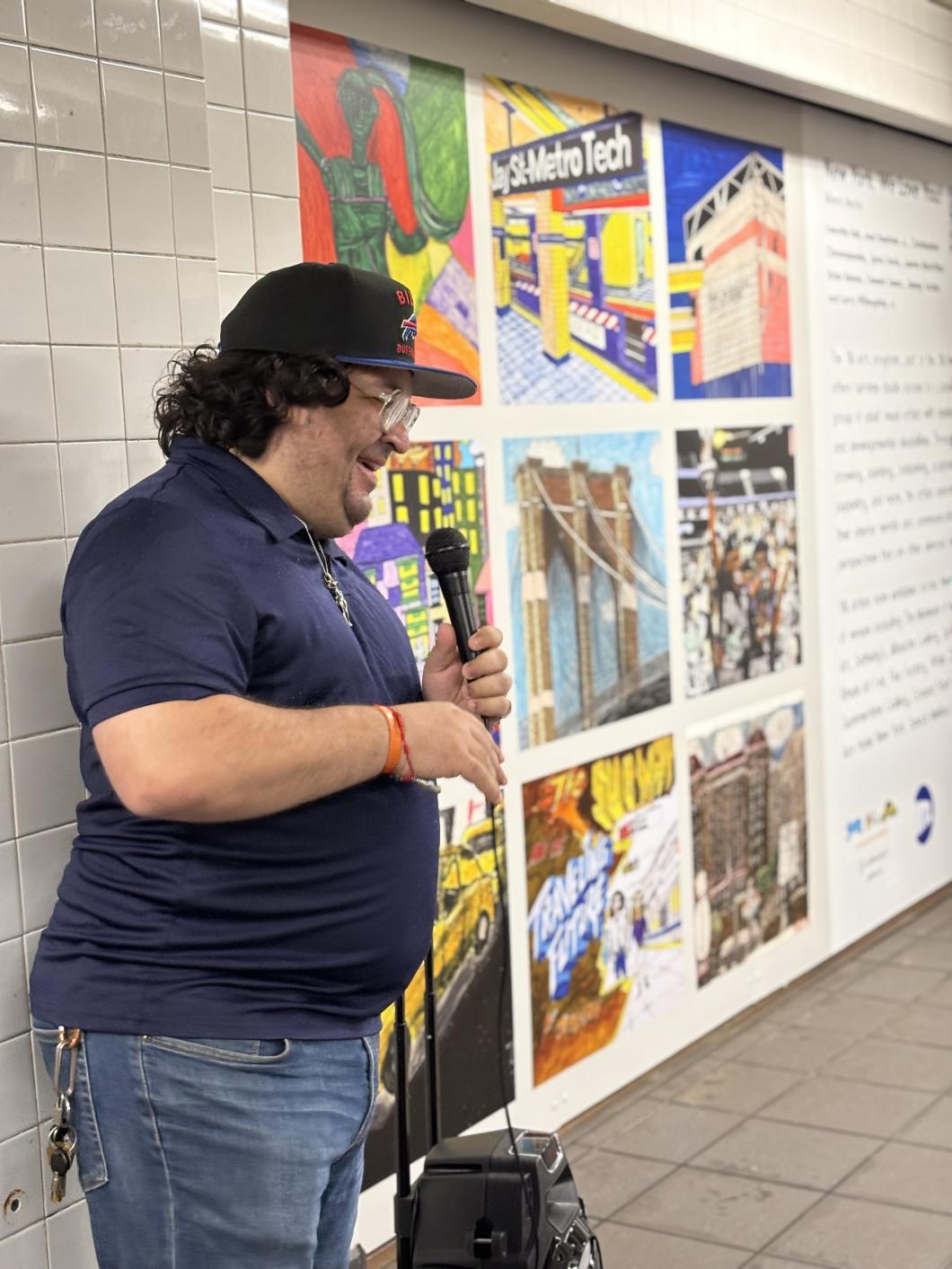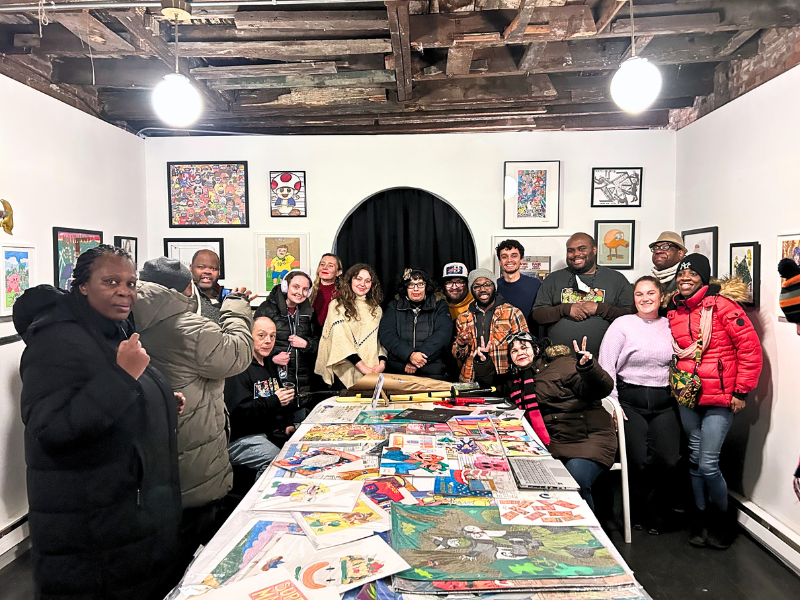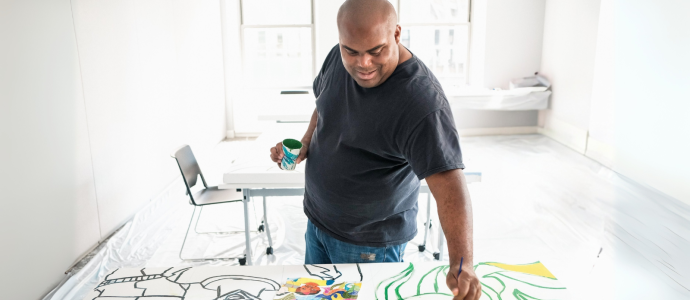Share
As a child, Chris Chronopoulos would sit quietly in front of the television, transfixed. While most toddlers were watching cartoons, Chronopoulos was mesmerized by Bob Ross.
"I was only three, but I remember it clearly," he said. "I was glued to the screen. My mom thought something was wrong with me because I was so still. But I was just so enthralled watching his every brushstroke."

Shortly after, Chronopoulos painted his first piece of art: a fruit basket that was floating in midair. His mother said it looked so lifelike she could barely believe her son had made it.
Today, the 37-year-old thrives as one of dozens of working artists at YAI Arts, a New York City nonprofit studio program for artists with disabilities. While primarily a painter, he also crafts impressive cosplay props and weapons. Chronopoulos has showcased his work in over 15 exhibitions. He credits YAI Arts for helping him find both recognition and renewal at a time when he felt lost.
“When I joined YAI in 2018, they didn’t treat me like I was a nobody,” he said. “They treated me like family.”
Art isn’t just a passion for Chronopoulos. It’s a lifeline. His experience, and that of other YAI artists is backed by research: A National Endowment for the Arts report indicates that people with disabilities involved in the arts report lower levels of anxiety and depression, plus significantly higher levels of life satisfaction. Moreover, a 2022 study published in Disability & Society found that inclusive arts programming helps people with intellectual and developmental disabilities (I/DD) strengthen social bonds, build self-esteem, and develop meaningful identities as artists.

This philosophy drives YAI Arts, providing artists with I/DD the space, materials, and mentorship to express their unique perspectives and grow professionally. The program’s goal is to honor artists, amplify their voices, and help them build sustainable creative careers. Artists keep 60% of the profits from any pieces they sell, with the remaining 40% reinvested into studio operations. And the impact is evident.
YAI Artists have exhibited at MoMA, Sotheby’s, Summertime Gallery, and the Spring Break Art Show. Their work appears on socks, t-shirts, and even in murals across New York City’s subway system. And in the studio, they are continuously pushing boundaries.

Take Everette Ball, for example. Ball creates intricate architectural drawings inspired by real buildings, including his favorite, the Plaza Hotel. He uses rulers and pencils to measure each line, erase, redraw, and refine. His drawings are so detailed they can contain hundreds of individual windows.
This year Ball has been selected for Look Everywhere, a major national group exhibition in Philadelphia in October, where six of his works will appear alongside other leading artists with disabilities. His drawings have also been featured at White Columns, one of New York’s most respected galleries for outsider art.
“We never tell someone their goal is too big,” said Mallory Perry, Assistant Supervisor of YAI Arts. “If someone says they want to show their work at MoMA, we say ‘OK, let’s try.’ It’s about giving people agency, meeting them where they are, and championing their vision.”
Perry, who is an artist herself, says she often looks up to the people in her program.
“They are my favorite artists in the world,” she said. “I’m in awe of everything they create.”
She cites Jimmy Tucker as a key influence. Tucker’s artwork is deeply personal, often inspired by superheroes, dreams, and mental health. He hopes to publish a comic book featuring superheroes with disabilities. For him, art is not just self-expression. It’s therapy.
“Jimmy doesn’t just make art—he teaches us how to live,” Perry said. “He’s poetic, wise, and constantly reminds me that art can hold both joy and pain, silliness and truth. I learn from him every day.”
Outside the studio, YAI Arts fosters connection and community. Artists regularly visit galleries and museums, draw inspiration from the city, and bond over basketball games, park days, and root beer floats. For many, these outings are as meaningful as the time spent creating.
“We’re not just teaching art—we’re creating joy and helping people discover who they are,” said Perry. “There’s this misconception that artists with disabilities aren’t professionals, but they are. They’re some of the best contemporary artists working today, and their work deserves to be shown, respected, and celebrated.”
Chronopoulos agrees. He paints now not just for himself, but for his two children.
“I want them to see that their dad is doing something he loves,” he said. “And maybe one day, they’ll do it too.”

